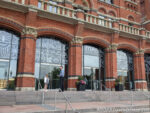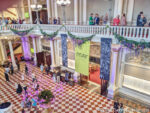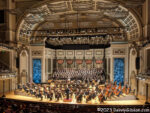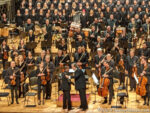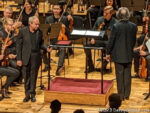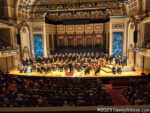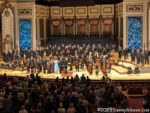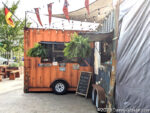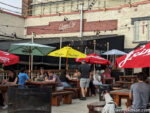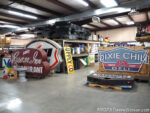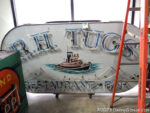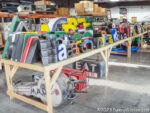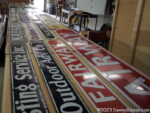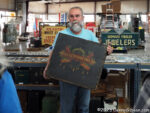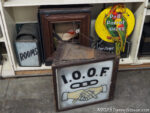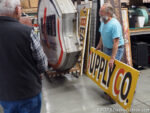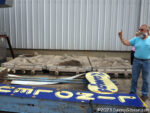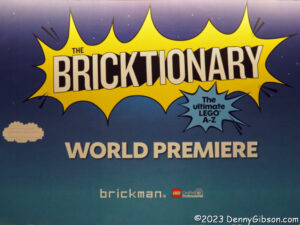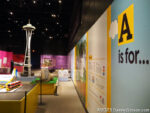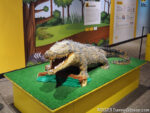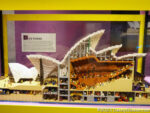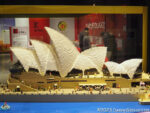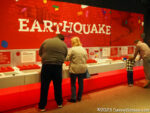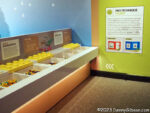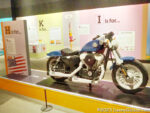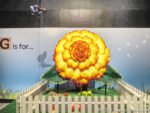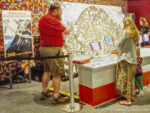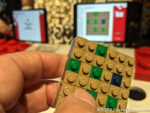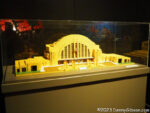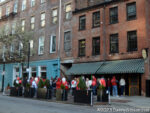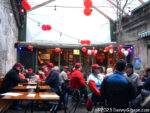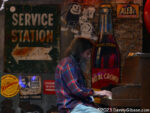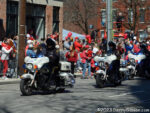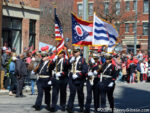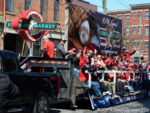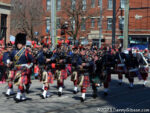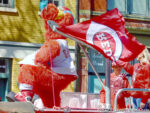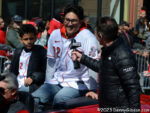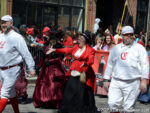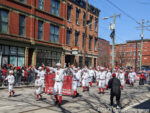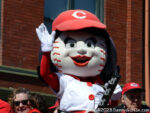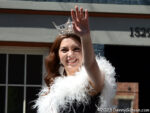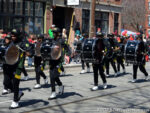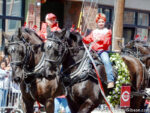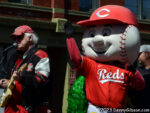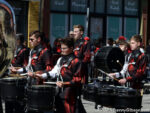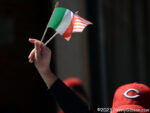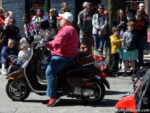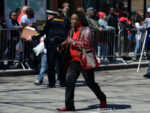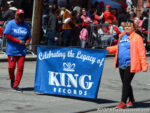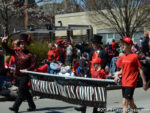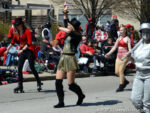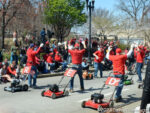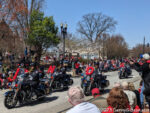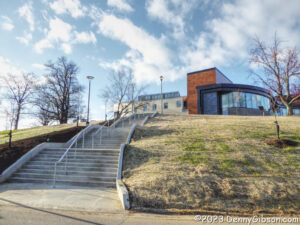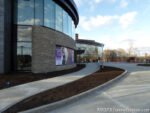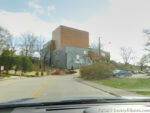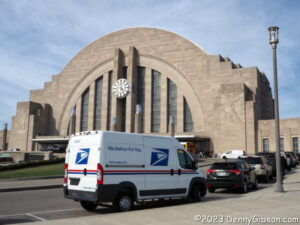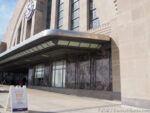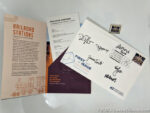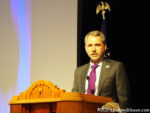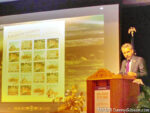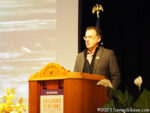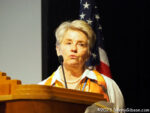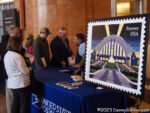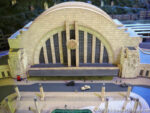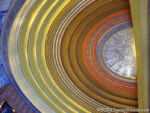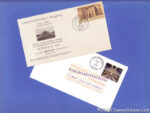 I’ve known of Ohio River Paddlefest for quite a while. I even planned to attend last year until severe weather convinced me — and everybody else — otherwise. Heavy storms led to the cancellation of several outdoor events including the 2022 Paddlefest. There wasn’t even a hint of foul weather this year and I finally made it to “the largest paddling event in the country” for the first time. I was not in position to see the launch of approximately 2000 participants into an Ohio River that was cleared of powered watercraft for the event but I did get to see many of them pass through Cincinnati’s riverfront.
I’ve known of Ohio River Paddlefest for quite a while. I even planned to attend last year until severe weather convinced me — and everybody else — otherwise. Heavy storms led to the cancellation of several outdoor events including the 2022 Paddlefest. There wasn’t even a hint of foul weather this year and I finally made it to “the largest paddling event in the country” for the first time. I was not in position to see the launch of approximately 2000 participants into an Ohio River that was cleared of powered watercraft for the event but I did get to see many of them pass through Cincinnati’s riverfront.
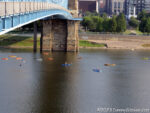
 I decided to park in Kentucky and use the century-and-a-half-old Roebling Bridge as an observation deck. People can choose to paddle either 4.5 or 9 miles from the launch point at Schmidt Recreation Complex at the east edge of Cincinnati. The pullout point for the shorter trip is the public landing near the coliseum. The big paddle wheeler at the landing is the American Heritage on her way to Pittsburgh. I don’t know whether being in town for Paddlefest was intentional or something they just couldn’t avoid. Also in that photo, the three ladies in the opening photo can be seen well past the landing on their way to the Roebling and my camera.
I decided to park in Kentucky and use the century-and-a-half-old Roebling Bridge as an observation deck. People can choose to paddle either 4.5 or 9 miles from the launch point at Schmidt Recreation Complex at the east edge of Cincinnati. The pullout point for the shorter trip is the public landing near the coliseum. The big paddle wheeler at the landing is the American Heritage on her way to Pittsburgh. I don’t know whether being in town for Paddlefest was intentional or something they just couldn’t avoid. Also in that photo, the three ladies in the opening photo can be seen well past the landing on their way to the Roebling and my camera.
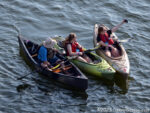

 There was a race and I’m sure there was a winner but most participants seemed to be much more concerned with enjoying the float and maximizing rather than minimizing their time on the water. Some even took time to look up and wave or wrangle three boats together for a group selfie.
There was a race and I’m sure there was a winner but most participants seemed to be much more concerned with enjoying the float and maximizing rather than minimizing their time on the water. Some even took time to look up and wave or wrangle three boats together for a group selfie.
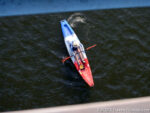
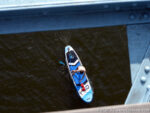
 Shooting upriver at the approaching boats meant shooting into the sun but at some point, I realized that I could completely avoid any glare issues by shooting straight down. Snapping paddlers just before they disappeared under the bridge was actually quite addictive and I snapped a few more before I could pull myself away.
Shooting upriver at the approaching boats meant shooting into the sun but at some point, I realized that I could completely avoid any glare issues by shooting straight down. Snapping paddlers just before they disappeared under the bridge was actually quite addictive and I snapped a few more before I could pull myself away.


 Not everything is ruined by shooting toward the sun. Some things actually look pretty good or so I convinced myself.
Not everything is ruined by shooting toward the sun. Some things actually look pretty good or so I convinced myself.
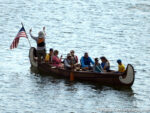
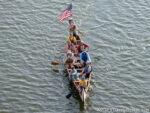
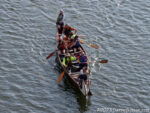 With the exception of some safety and patrol boats, these were probably the most powerful watercraft on the Ohio near Cincinnati throughout the morning. They did not flaunt it, however, and were well back in the pack.
With the exception of some safety and patrol boats, these were probably the most powerful watercraft on the Ohio near Cincinnati throughout the morning. They did not flaunt it, however, and were well back in the pack.
 Shortly after the big boats passed, I finished crossing the bridge and moved to the downstream side to return to Kentucky. Catching boats just as they popped out from under the bridge wasn’t nearly as easy as catching them just before they popped under it but I did catch one.
Shortly after the big boats passed, I finished crossing the bridge and moved to the downstream side to return to Kentucky. Catching boats just as they popped out from under the bridge wasn’t nearly as easy as catching them just before they popped under it but I did catch one.
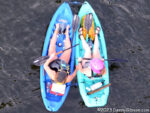
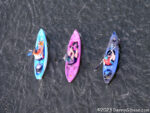
 These are all a bit away from the bridge and moving slowly.
These are all a bit away from the bridge and moving slowly.
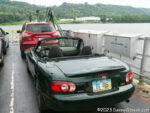

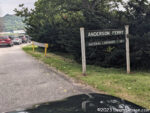 Back in Kentucky, I grabbed brunch and then headed to where the nine-mile paddle ended and where the wrap-up party was being held. For some reason, northbound I-71/75 was closed at the river. I didn’t figure that out until I was forced beyond it. I decided to just keep going and cross the river on the Anderson Ferry for a real break from the normal. The Miata got the first of two comments when the attendant collected my fare. “Nice change of pace. I have to reach up for every other car.”
Back in Kentucky, I grabbed brunch and then headed to where the nine-mile paddle ended and where the wrap-up party was being held. For some reason, northbound I-71/75 was closed at the river. I didn’t figure that out until I was forced beyond it. I decided to just keep going and cross the river on the Anderson Ferry for a real break from the normal. The Miata got the first of two comments when the attendant collected my fare. “Nice change of pace. I have to reach up for every other car.”

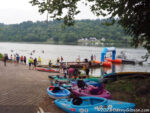 The second comment came from a fellow directing traffic at the Gilday Recreation Complex. With a mostly straight face, he asked if I was there to pick up a 17-foot canoe. Lots of canoes and kayaks had already departed and many more were in the process of being loaded. But there were still plenty waiting in the park and even a few still on the river. The finish line was still in place when I arrived but it would soon be gone.
The second comment came from a fellow directing traffic at the Gilday Recreation Complex. With a mostly straight face, he asked if I was there to pick up a 17-foot canoe. Lots of canoes and kayaks had already departed and many more were in the process of being loaded. But there were still plenty waiting in the park and even a few still on the river. The finish line was still in place when I arrived but it would soon be gone.
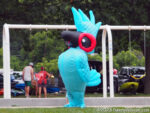

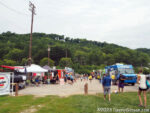 Madtree had a beer tent set up and there were several food trucks. The Sunburners provided some good Jimmy Buffet-style music and there were some Jimmy Buffet-style listeners too.
Madtree had a beer tent set up and there were several food trucks. The Sunburners provided some good Jimmy Buffet-style music and there were some Jimmy Buffet-style listeners too.
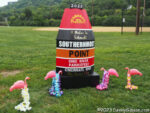 I had my doubts about the claims of this photo-op but a little research confirmed that the Gilday Complex really was the southernmost point of the Ohio River Paddlefest. And today it even felt kind of tropical.
I had my doubts about the claims of this photo-op but a little research confirmed that the Gilday Complex really was the southernmost point of the Ohio River Paddlefest. And today it even felt kind of tropical.

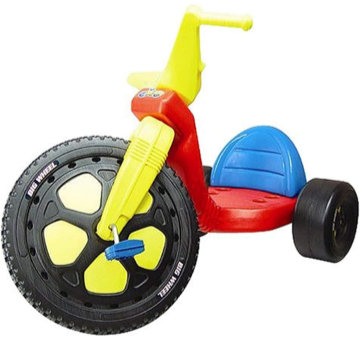 History does repeat itself. In the early 1970s, I lived with my wife and two sons in a house with a driveway that sloped to a paved area in the back. That driveway was an ideal spot for the four-year-old to give his Big Wheel a workout. While I worked on something on a car behind the house, he repeatedly pushed the three-wheeler to the top of the hill so he could come rocketing down the hill, brace his feet on the pedals to stop the big front wheel, and throw the rear wheels into a perfect 180-degree slide. This was exactly what Big Wheels were designed for. After one of his countless slides, he looked up at me and made an incredibly insightful observation. “Dad”, he said, “I bet you wish you could do this.”
History does repeat itself. In the early 1970s, I lived with my wife and two sons in a house with a driveway that sloped to a paved area in the back. That driveway was an ideal spot for the four-year-old to give his Big Wheel a workout. While I worked on something on a car behind the house, he repeatedly pushed the three-wheeler to the top of the hill so he could come rocketing down the hill, brace his feet on the pedals to stop the big front wheel, and throw the rear wheels into a perfect 180-degree slide. This was exactly what Big Wheels were designed for. After one of his countless slides, he looked up at me and made an incredibly insightful observation. “Dad”, he said, “I bet you wish you could do this.”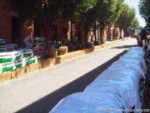
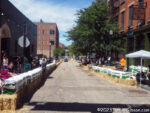






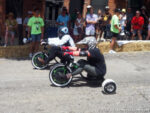


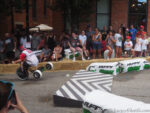
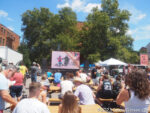
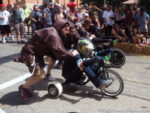

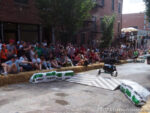
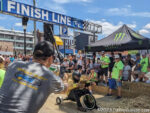
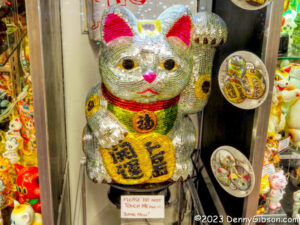



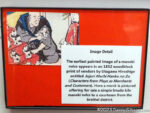
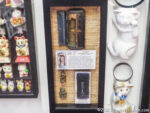


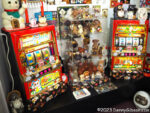

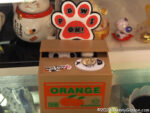
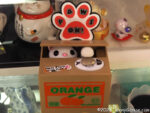
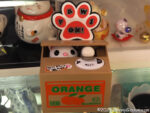
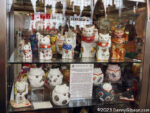
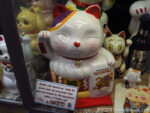
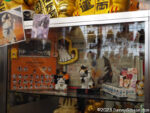
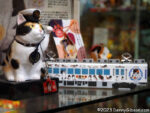

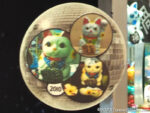

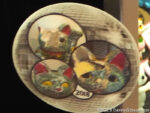
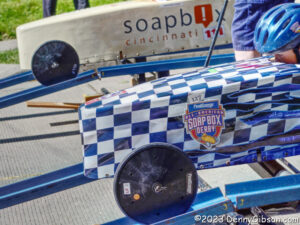
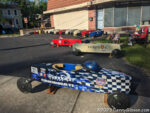
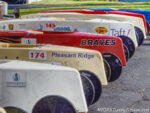

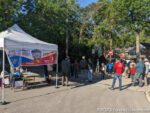
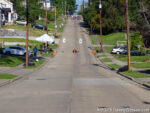






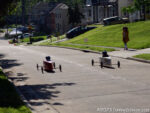
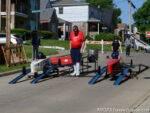

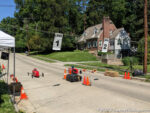

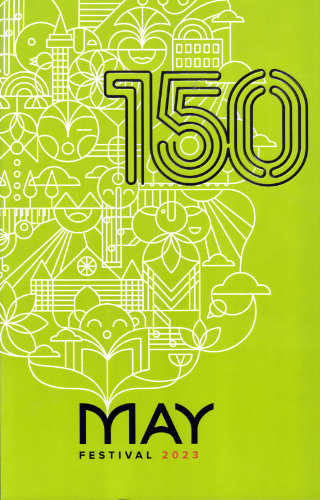 I did better this year than last, and last year I did better than in any of the preceding 148. As explained in a blog post (
I did better this year than last, and last year I did better than in any of the preceding 148. As explained in a blog post (